Now in its 31st year, the Australian Wooden Boat Festival sees thousands flock to celebrate the biggest and best in wooden boats and maritime culture in Tasmania.
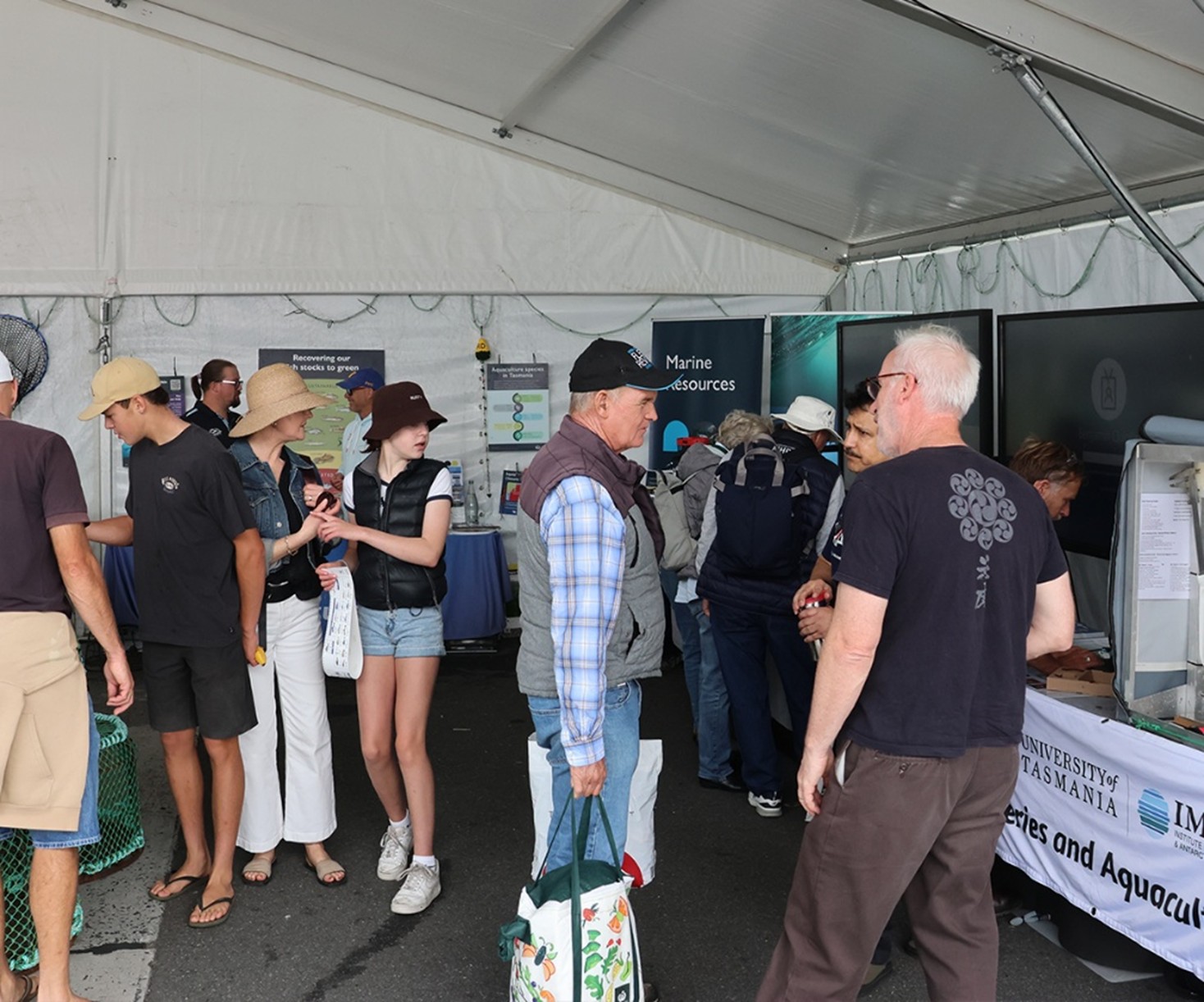
The grey skies and southerly breeze didn’t dampen the spirit of this year’s Australian Wooden Boat Festival in Hobart. Thousands of visitors flocked to the waterfront of the Apple Isle capital for the biennial festival, which stretched from Victoria Dock to Salamanca.
Now in its 31st year, the event has grown into Tasmania’s largest festival and the biggest celebration of wooden boats and maritime culture in the Southern Hemisphere.
After supporting the festival in 2023, FRDC returned this year with strong backing from dedicated researchers, volunteers and staff from the University of Tasmania’s Institute of Marine and Antarctic Studies (IMAS), Department of Natural Resources and Environment Tasmania (NRE TAS) joined Seafood Industry Tasmania in the “Gotta Love Tassie Seafood” marquee at Constitution Dock.
The Research
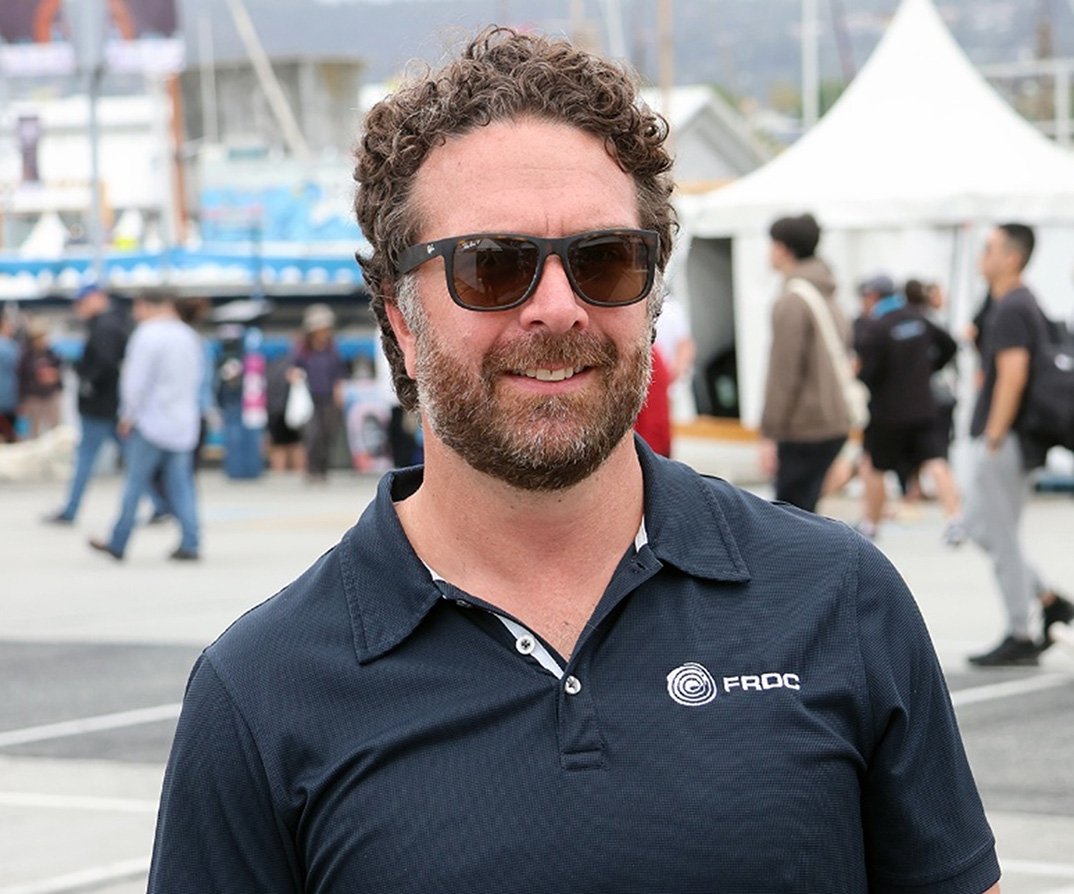
Visitors to the marquee had the opportunity to speak with experts, explore numerous projects, ask questions and debunk myths about our oceans and the research that informs scientific decision-making.
Dr. Alyssa Marshell captivated the crowd with a deep dive into the technology used to survey fish habitats, while Dr. John Keane discussed the impact of climate change on our oceans, including the southward encroachment of the invasive Longspined Sea Urchin (Centrostephanus rodgersii).
Associate Professor Quinn Fitzgibbon provided a behind-the-scenes look at the Southern Rock Lobster (Jasus edwardsii), explaining how they breathe, track the seasons and sense predators.
FRDC Senior Research Portfolio Manager Josh Fielding emphasised the importance of public transparency.
“Many people don’t have the opportunity to be across how contemporary the research work FRDC invests in is—we are funding work on Atlantic Salmon and Flathead in Tasmania, demersal fish in WA, and Snapper in South Australia. We’re here to reinforce and communicate the strength and importance of the scientific process in decision-making,” said Josh.
“These events allow us to engage face-to-face and explain science in plain English. In Tasmania, for example, science has sometimes been weaponised, so it’s more important than ever to highlight its role as an essential and independent process. FRDC’s systems are designed to be robust, following traditional scientific methods like peer review to build knowledge and improve understanding.”
Also, on display were:
-
The groundbreaking Marine Atlas 2019-111
-
Revolutionary image recognition technology to improve Giant Crab (Pseudocarcinus gigas) stock assessments 2019-114
-
Efforts to secure high-quality, safe oyster populations for consumption
-
Insights into the natural "boom and bust" cycle of wild scallop populations
Traditional welcome
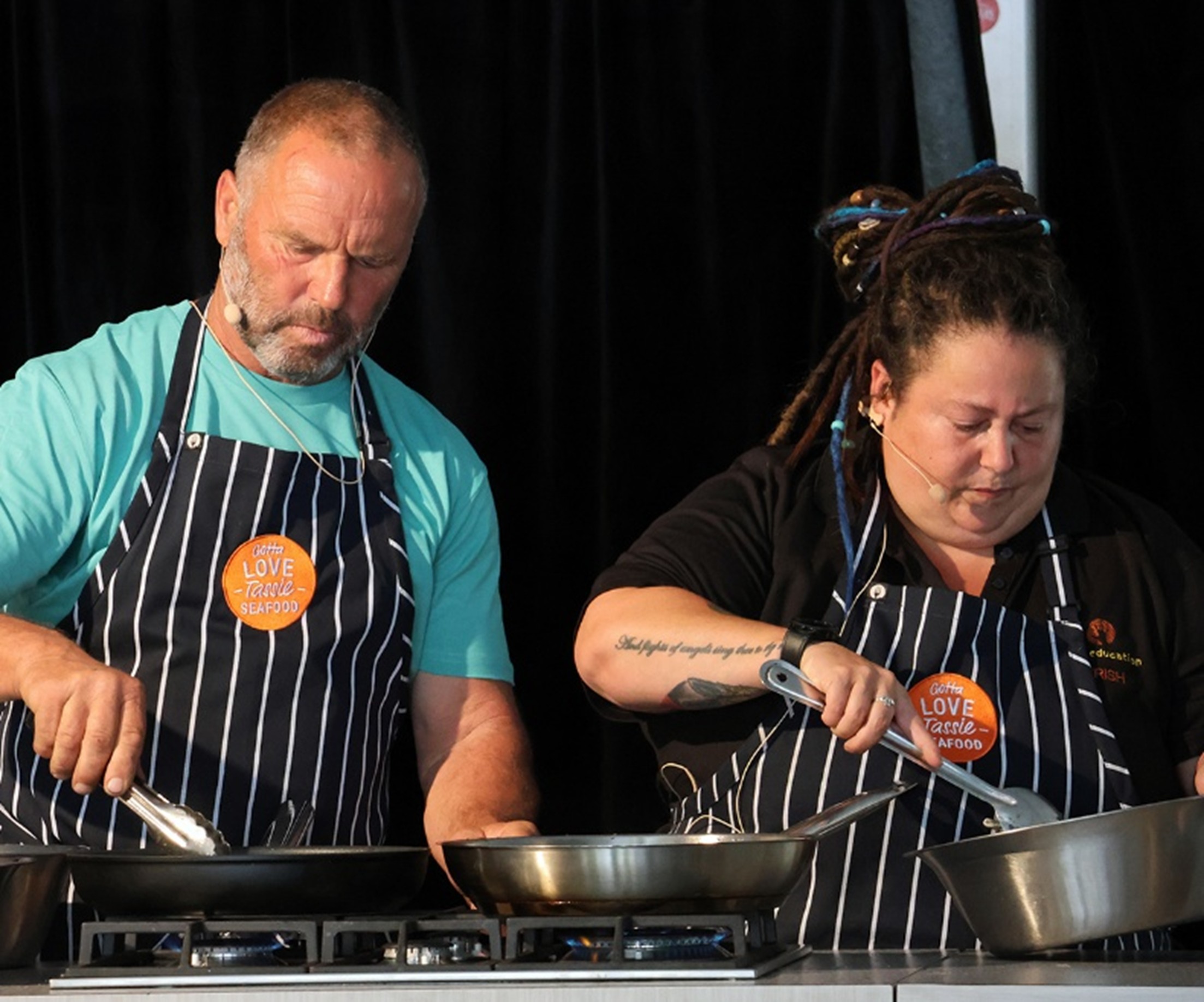
Trish Hodge of National Indigenous Training Academy Education is a proud Palawa (Tasmanian Aboriginal) woman from the Trawlwoolway people of northeast Lutruwita/Tasmania. Along with Bryan Denny, a Melurkedee man and commercial fisher, Trish opened the Eat More Tassie Seafood marquee with a Welcome to Country.
When FRDC asked why it was important for her to be at the event, she reflected on a comment she hears all too often—a misconception that “there are no Tasmanian Aboriginal people here [in Hobart].”
“I said, well, you’re talking to one right now—so we’re real,” Trish explained this assumption is just one example. “It happens all the time, so being able to break that down face-to-face is just incredible.”
Throughout the event, Trish shared knowledge and customs with visitors, showcasing traditional tools used by Aboriginal people to harvest and prepare seafood. One of these was what she calls the shusha.
“I call it the shusha, but it's a club made from a small gum tree root ball, used to tenderise abalone,” she said.
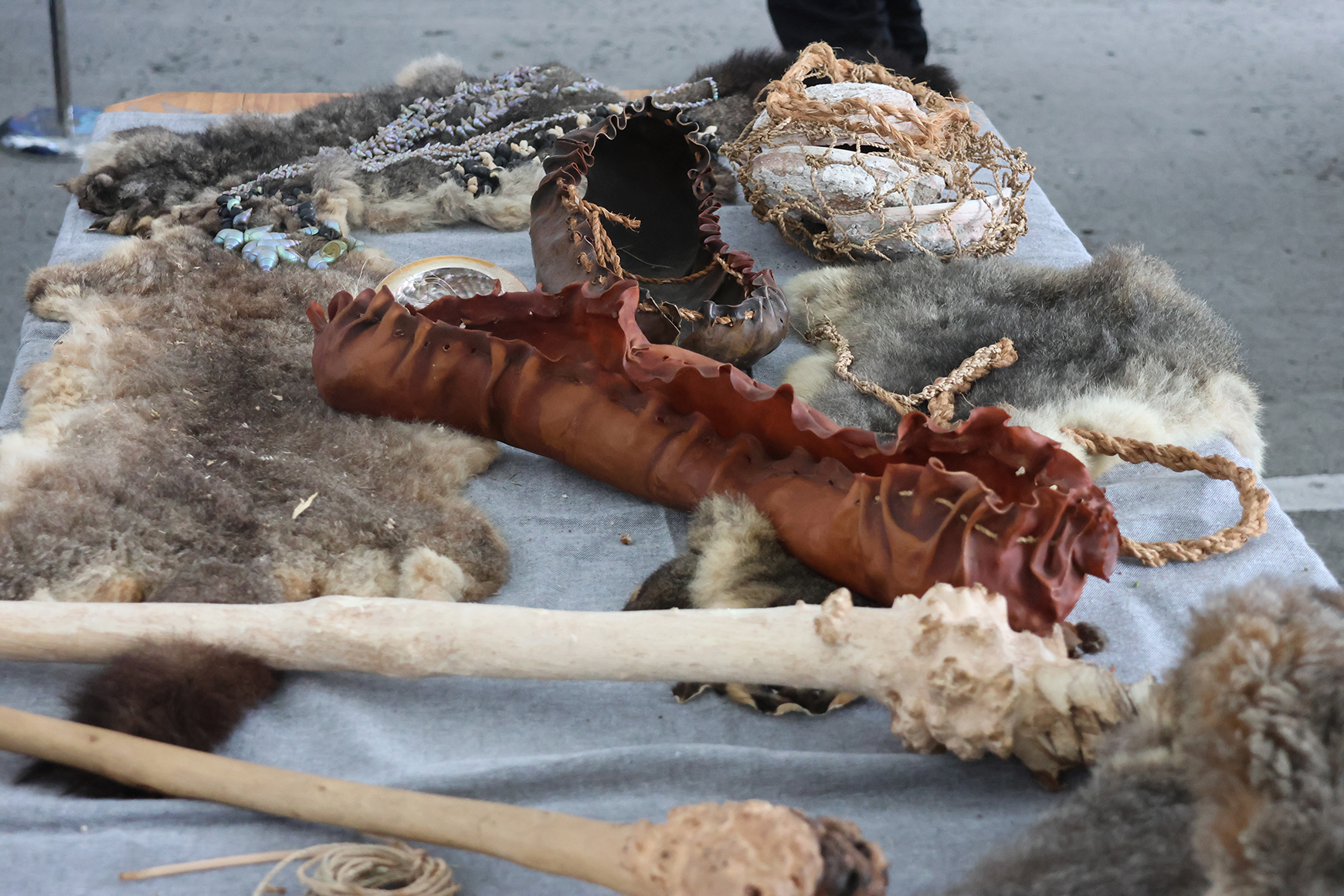
The Food
Using native and local ingredients like Baeckea, Seablites (Suaeda spp.) and Tasmanian Pepperberry (Tasmannia lanceolata), Trish and Bryan kicked off the cooking with a taste of Aboriginal cuisine that has been enjoyed for hundreds of years. Periwinkles (Turbo undulatus) and Greenlip Abalone (Haliotis laevigata) took centre stage.
Thanks to NRE, visitors were also encouraged to step outside their comfort zones with live cooking and tastings of abundant species, including uni from the invasive Longspined Sea Urchin and locally caught, smoked Eastern Australian Salmon (Arripis trutta).
On the main stage, Seafood Industry Tasmania showcased some of the finest seafood Tasmania has to offer, featuring Blue-eye Trevalla (Hyperoglyphe antarctica), Atlantic Salmon (Salmo salar), Pacific Oysters (Magallana gigas), Southern Rock Lobster, Octopus (Octopus sp.), Commercial Scallops (Pecten fumata) and more.
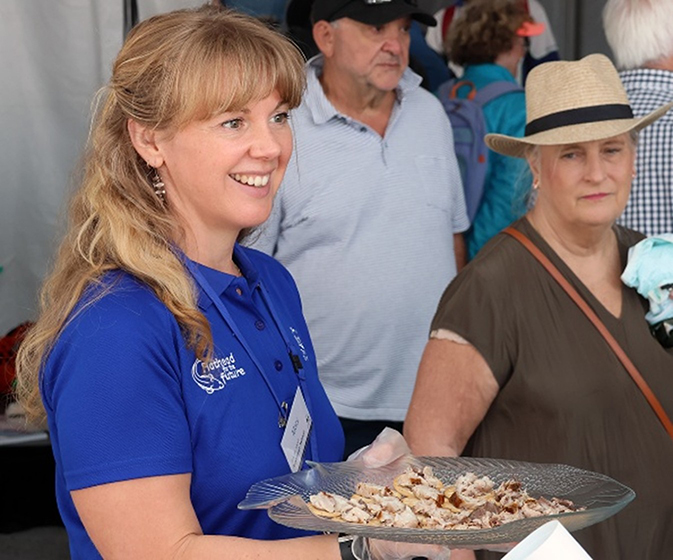
Oyster Shucking
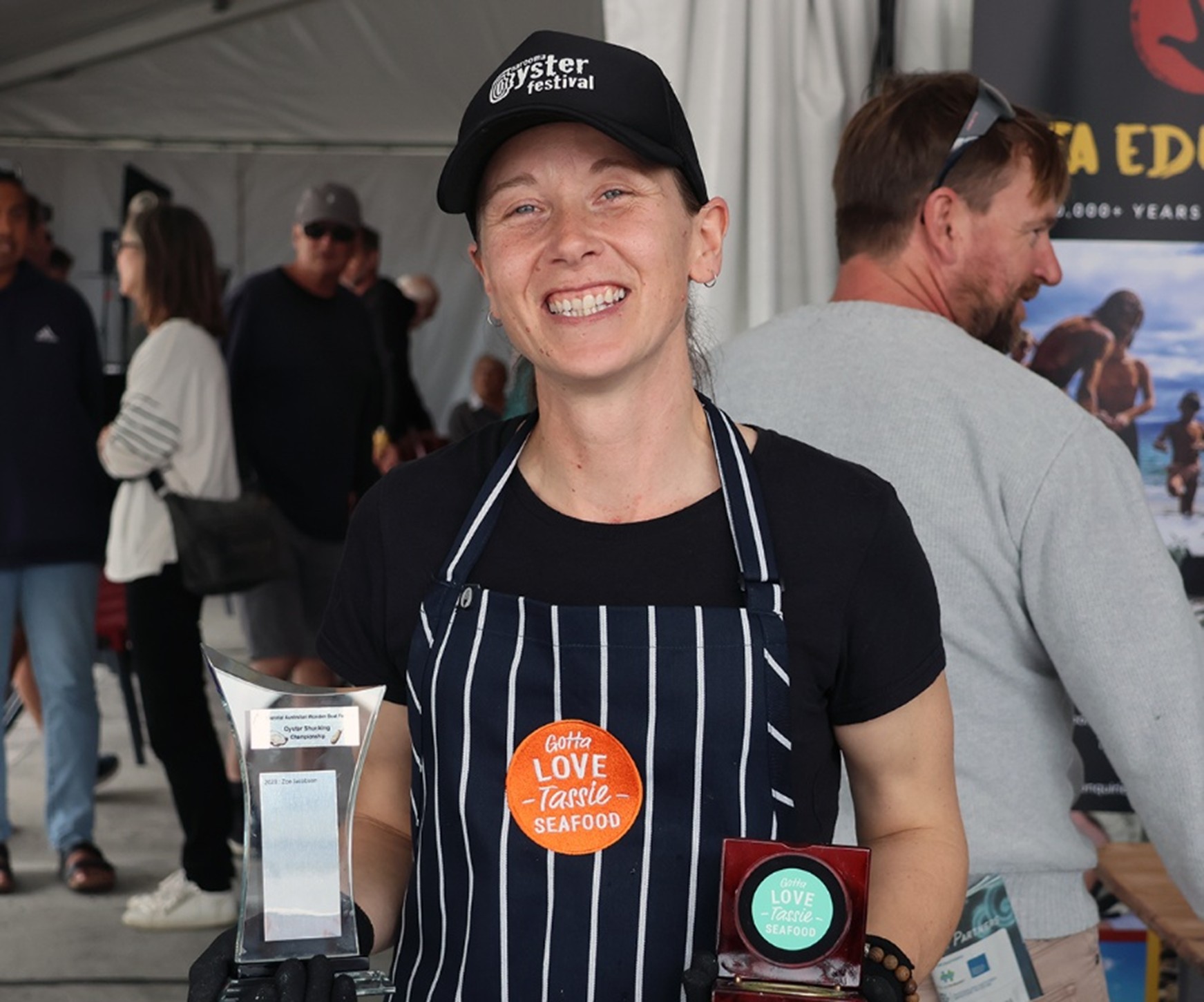
The marquee hosted the highly anticipated oyster shucking competition, where amateurs went head-to-head with professionals. For the second time, Zoe Jacobson took the win, impressively shucking a dozen oysters in just one minute and four seconds.
As the champion, Zoe will now compete at the national event, held at the Narooma Oyster Festival from May 2–4.
The entrants
Amateurs
Janie Finlay
Bob Milne
Mark Wright
Professionals
Zoe Jacobson (Living the Shucking Dream and Ma Bruny Oysters) 1:04
Dan Blowfield (Ma Bruny Oysters) 1:15
Josh Poke 2:30





